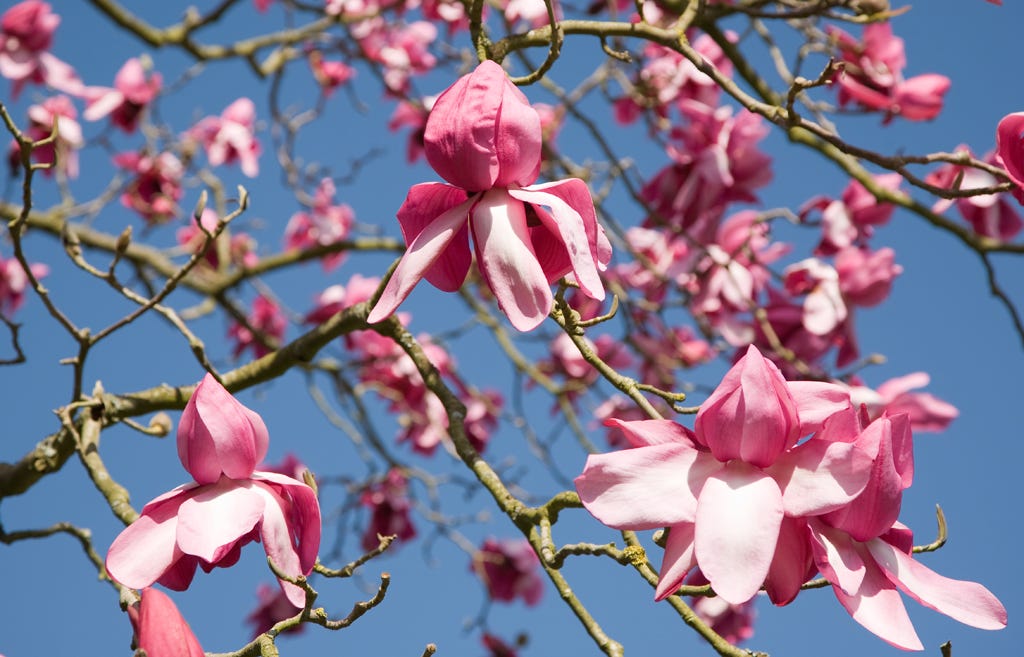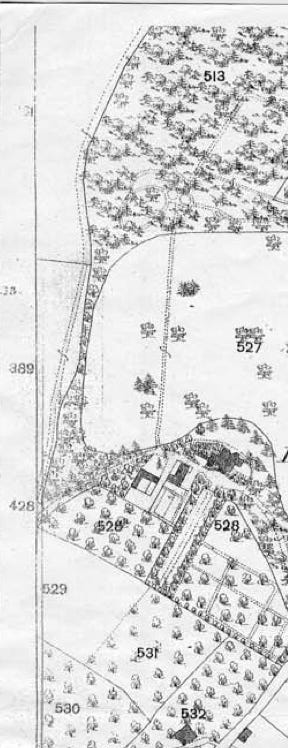How to design your garden borders
Learn how to create flowerbeds and borders as I demystify the process for you
Little signs of Spring are arriving, trickling through the grey to ease our frustration at another slippery muddy walk. And little signs of hope in the yellows and blues, and an occasional brave tulip who hasn’t seemed to mind the weather at all. But it’s definitely time to start the planning….
This is a garden that I first started working on nearly twenty years ago: and yes, it actually still feels like yesterday. When I look at old photos of here, it really does hit home that in this garden’s story, I played just a small part, and that things will change. Of course they will: it’s a garden.
There’s a little bit of a back story that’s needed here, and I promise you it isn’t another sidetracking ramble; it’s intended to fill in the gaps that I feel are there when I read about a garden, and it’s one of the things that I’m addressing in my next book (New Romantic Gardens and everything that entails) in which I’m looking at the wheres and whys and hows and whos. And folklore and fairies…..
Most importantly for our purposes here, getting under a garden’s skin is what I do before I set about designing a border.
These borders were magnificent when I saw them for the first time.
Magnificent in structure. Camellias, magnolias, everything was there: a whatever-the-collective-word-is for flowering shrubs (but not a shrubbery) gave massive structure and height to this place. Magnolias tower along the borders’ borders, and a fuzz of pink through to deep wine is what you look through from the outside.
Anyway, just imagine seeing all this. And then realising you’re there to improve on it, to inject a lot of a spark into a pair of nearly-100 metre long borders either side of a grass walk. Oh, and you can walk behind these borders too as there are paths all the way around. So there’s nowhere to hide, literally.
So what doesn’t happen first in my mind, is a plant list. What happens instead is a bit of research: maybe some trips to archives, a bit of delving around boxes, and lots of googling. You might be lucky and turn up an Ordnance Survey map that was made on a day when the cartographer was also a fan of gardens. (I spend a lot of my time looking at old maps and I’m convinced that to an extent, the detail of a garden can sometimes depend on the hobbies of the mapmaker concerned. Maybe this isn’t true and I’ll be told off by the Map-hia, but it certainly feels like it to me).
I love it when I get a result like this: 130 years before I got there, someone else had made an excellent record. The key thing for me to find out was that these borders had been there for a long time. Do you see them in the bottom third of the map? Travelling north-east to south-west, with the grass walkway dotting all the way along, they are clearly A Feature.
They were still there in 1904 too, and this photo below shows what’s going on in front of the trees and shrubs. Repeated herbaceous planting, ‘of its time’ shall we say, all on the flat.

It’s a garden created by generations of garden-lovers, that much can be seen. But 95 years later, it was time to gently nudge these borders into the 21st century, without belittling or ignoring who and what had gone before.
And so, with the aim of doing something without looking like I’d done something, I started to think about structure. I started to think about shrubs.
The shrubs. You’ve got to love a flowering shrub. Or an evergreen shrub. Or both, all, every one. I have felt very, very sorry for shrubs over the last quarter of a century. Sharp-elbowed out of favour by presumptuous ornamental grasses, they’ve been quietly biding their time in a Colefax & Fowler floral fabric kind of a way, and I’m glad to see and hear that both shrubs and chintz are ‘back’.
They’ve always been back, in my book. Roses followed by hydrangeas are a mainstay in the gardens I work in (no surprise there), and we need them. I mean, can you imagine banks of panicums and calamagrostis sitting against this fabulous range of shrubs in the colour photos? Lovely in the right place, wrong for here.
So that’s the first thing I do when thinking about starting a planting concept for this sort of space. I need to get a feel for what’s around, and that tells me what to do.
The outside edges with their vertical fabulousness were, with a bit of tweaking and liberating, obviously going to stay.
So stepping down a storey, the first thing to be done in the planting beds in front, having taken stock of the stock, was to get some reshaping done. Avoiding slash and burn, I always want to make do with what I’ve got wherever I can. It does make me smile that this is now called a sustainable approach…. I reckon so many of us have probably had a sustainable approach for years, don’t you think?
There were a group of massively overgrown, wild, unruly shrubs near the steps at the entrance to this area. Berberis, euonymus and pittosporum all looked messy and annoying and NOT at all what the doctor ordered, and the easy route would be to replace them all with smart domes of something. I thought about it. And then the penny dropped: why not wrestle and massage these shaggy beings into smart domes?
Well, I could have a go.
So I did.
And there’s instant structure:







